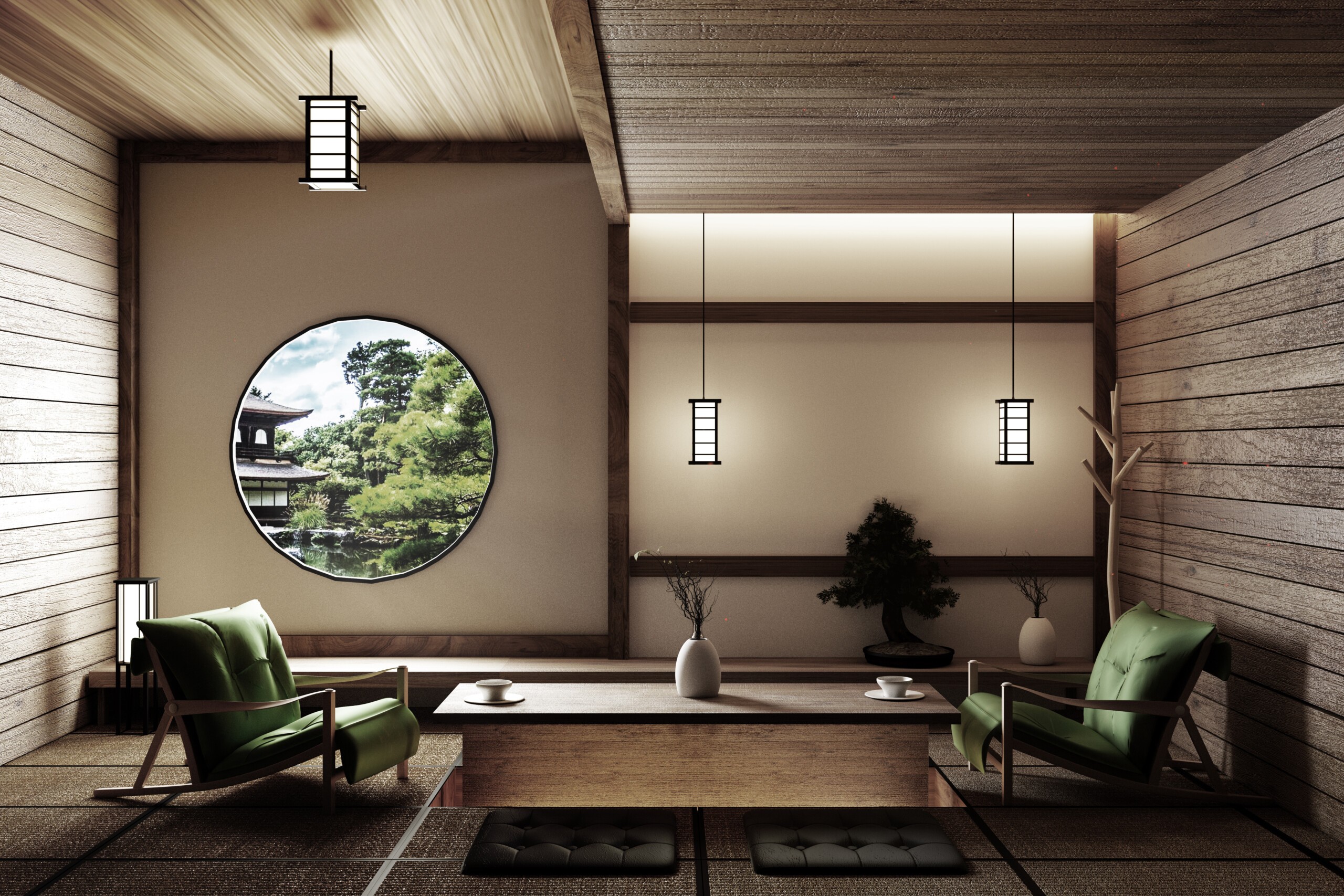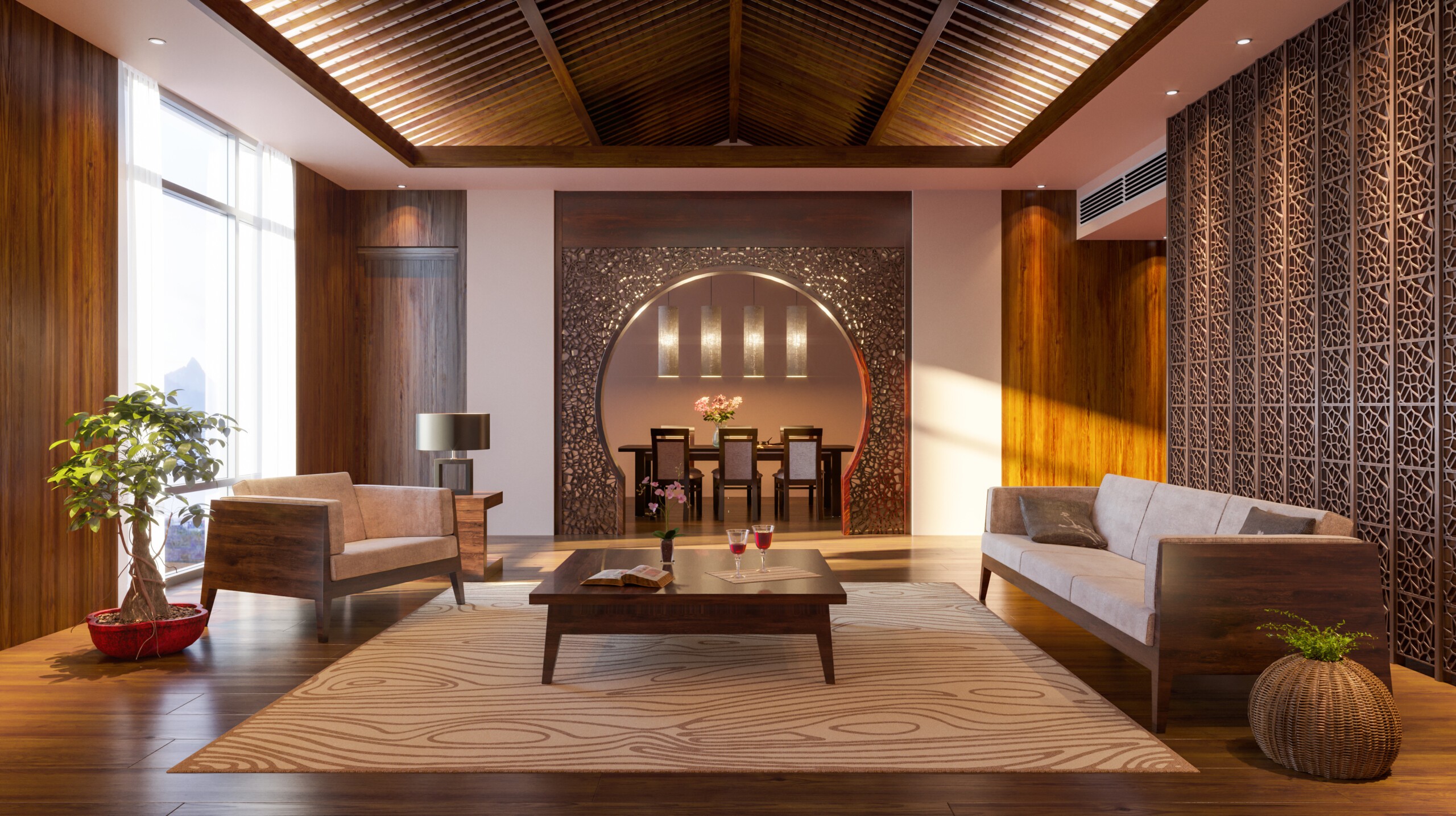Design Principles and Elements: Asian Interior Design

Asian interior design is guided by a set of fundamental principles that emphasize harmony, balance, and asymmetry. These principles are rooted in traditional Asian philosophies and aesthetics, and they are evident in both traditional and modern Asian homes.
One of the most important principles of Asian interior design is harmony. This is achieved through the use of natural elements, such as wood, stone, and water, and by creating a sense of balance and flow throughout the space. Asian interiors often feature open floor plans and large windows that allow natural light to flood in, creating a sense of spaciousness and tranquility.
The charm of Asian interior design lies in its harmonious blend of simplicity, natural elements, and a touch of opulence. For those seeking to recreate this aesthetic in their own homes, low budget small house interior design offers a practical solution.
By incorporating neutral tones, organic textures, and subtle accents, you can achieve the essence of Asian style without breaking the bank. Ultimately, the beauty of Asian interior design lies in its ability to create a serene and inviting atmosphere that transcends cultural boundaries.
Balance
Balance is another key principle of Asian interior design. This can be achieved through the use of symmetrical or asymmetrical elements. In symmetrical designs, the elements are arranged in a mirror image of each other, while in asymmetrical designs, the elements are arranged in a more informal and organic way. Both types of balance can create a sense of harmony and order in a space.
Asian interior design often incorporates natural elements and a sense of serenity. Green wallpaper hd can bring a touch of the outdoors into your home, creating a calming and inviting atmosphere. The lush greenery of the wallpaper can help to reduce stress and promote relaxation, making it a great choice for bedrooms and living rooms.
Asymmetry
Asymmetry is a common feature of Asian interior design. This can be seen in the use of off-center arrangements, such as a painting hung slightly to one side of a wall, or a vase placed on a table at an angle. Asymmetry can create a sense of movement and interest in a space, and it can also help to break up the monotony of a symmetrical design.
Natural Elements, Asian interior design
Natural elements are an essential part of Asian interior design. These elements can be used to create a sense of connection to the outdoors and to bring a sense of peace and tranquility to a space. Wood is a common material used in Asian interiors, and it can be used for furniture, flooring, and walls. Stone is another popular material, and it can be used for countertops, fireplaces, and sculptures. Water is also an important element in Asian design, and it can be used in the form of fountains, ponds, or aquariums.
Color and Texture

In Asian interior design, color and texture play a crucial role in shaping the overall ambiance and mood of a space. The choice of colors and materials is deeply rooted in cultural traditions and philosophical beliefs, creating a harmonious and inviting atmosphere.
Color Palettes
Traditional Asian color palettes often incorporate natural hues such as earth tones, greens, and blues, which reflect the surrounding landscape. Neutral colors like white and beige serve as a backdrop, allowing vibrant accents and patterns to stand out.
- Red: Symbolizes good fortune, prosperity, and vitality.
- Gold: Represents wealth, power, and spirituality.
- Green: Associated with nature, growth, and harmony.
- Blue: Calming and serene, it evokes tranquility and well-being.
Textures and Materials
Asian interiors showcase a diverse range of textures and materials that add depth and character to the space. Natural materials like bamboo, silk, and lacquer are commonly used, creating a tactile and inviting ambiance.
- Bamboo: A versatile material known for its durability and sustainable qualities.
- Silk: Luxurious and elegant, it adds a touch of sophistication and opulence.
- Lacquer: A glossy finish that protects and enhances the beauty of wood or other surfaces.
Contribution to Ambiance
The interplay of color and texture in Asian interior design creates a harmonious and inviting atmosphere. Neutral tones provide a calming backdrop, while vibrant accents and patterns add energy and interest. The use of natural materials connects the space to nature, fostering a sense of tranquility and well-being.
Furniture and Decor

Asian interior design places a strong emphasis on functionality and harmony. Traditional Asian furniture often incorporates low tables, seating platforms, and screens, creating a sense of intimacy and connection with the floor. These pieces are typically made from natural materials such as wood, bamboo, or rattan, and often feature intricate carvings or decorative accents.
Screens play a significant role in Asian interior design, serving both functional and aesthetic purposes. They can be used to create privacy, divide spaces, or simply add a decorative touch. Screens are often made from paper, silk, or wood, and may feature painted or calligraphic designs.
Incorporation of Asian Art
Asian art, such as calligraphy and paintings, is often incorporated into interior design schemes to add a touch of elegance and sophistication. Calligraphy, the art of writing characters with a brush, is highly valued in Asian culture and can be used to create beautiful wall hangings or decorative accents. Paintings, often depicting landscapes, nature scenes, or religious figures, can add a sense of depth and spirituality to a room.